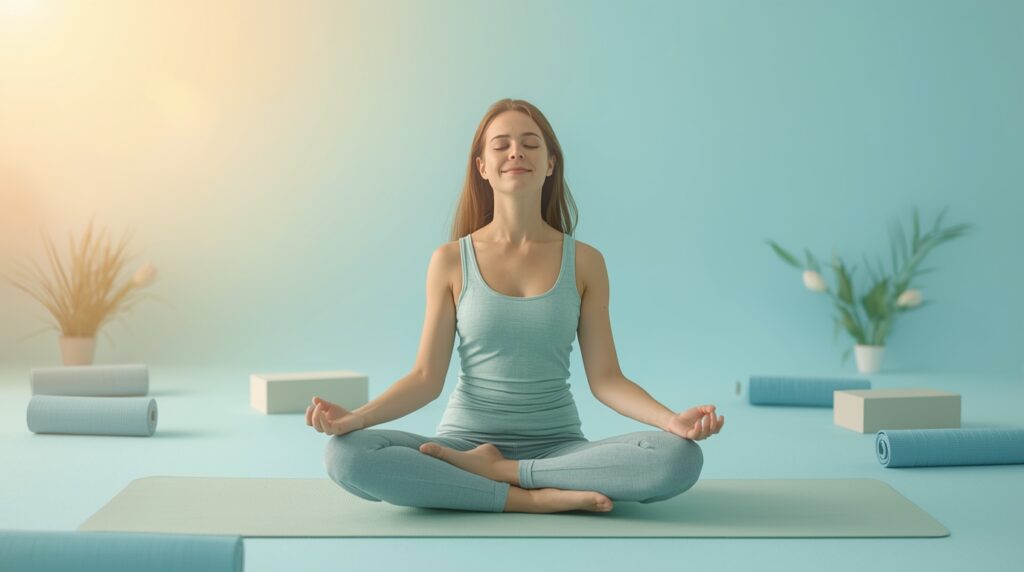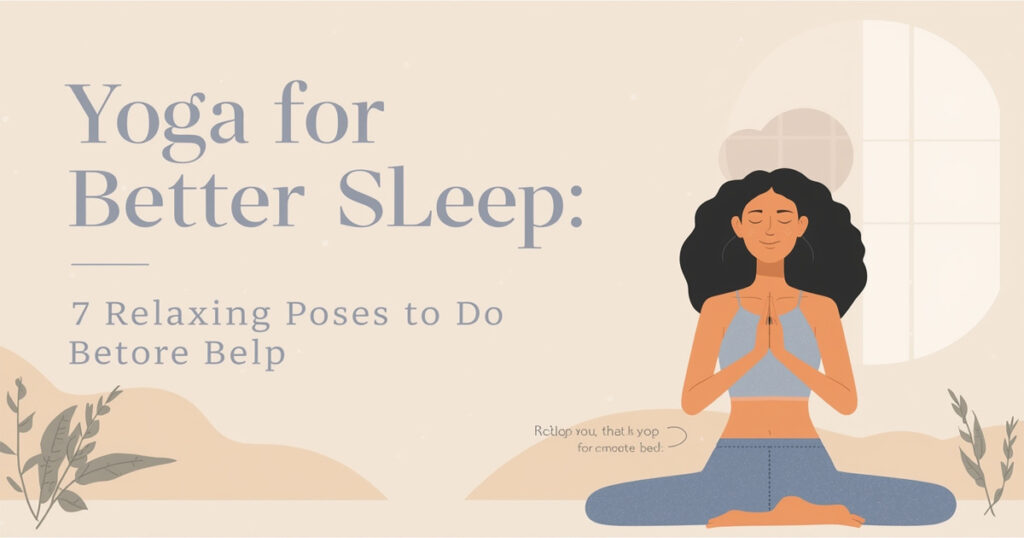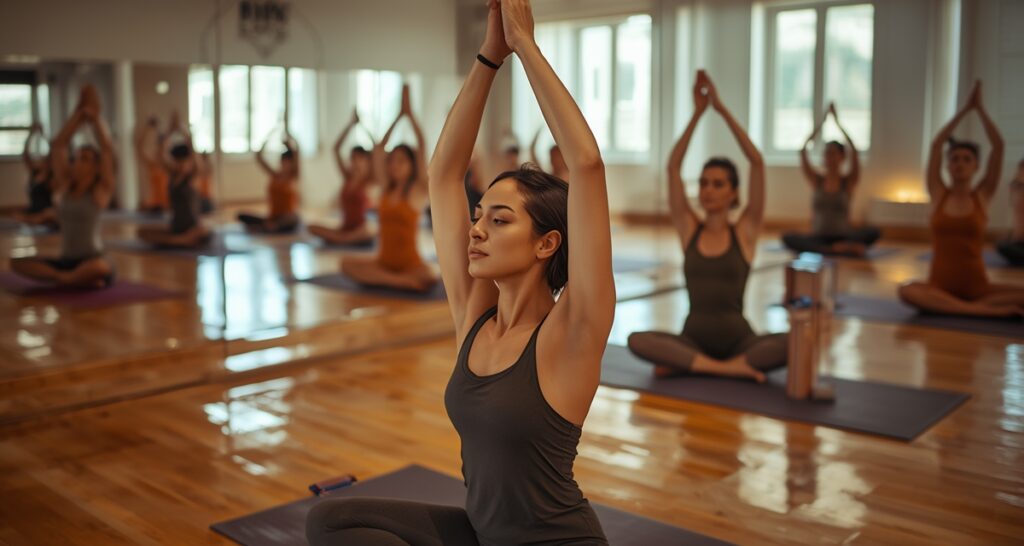Mental health has become one of the biggest challenges in the United States today. According to the National Institute of Mental Health (NIMH), millions of Americans struggle with anxiety, depression, and stress-related disorders every year. The fast-paced lifestyle, work-related pressure, social media exposure, and lack of work-life balance have worsened the problem.
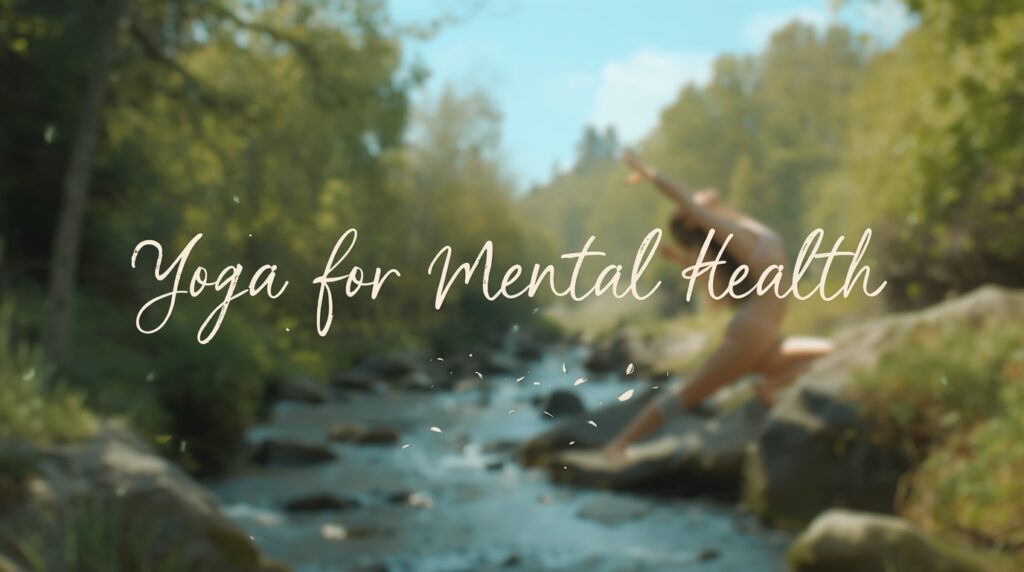
While therapy and medication are important tools for managing mental health, an increasing number of Americans are turning to yoga as a holistic solution. Yoga is not just about physical fitness—it combines breathing techniques, mindfulness, and movement to balance both the body and mind. In this article, we will explore how yoga helps combat anxiety and depression, the science behind it, recommended poses, and how Americans can integrate yoga into their daily lives.
Why Mental Health is a Growing Concern in the US
- High Stress Levels – According to the American Psychological Association, over 75% of US adults report regular stress.
- Rising Anxiety Disorders – Nearly 40 million Americans suffer from anxiety-related conditions.
- Depression Rates – More than 21 million adults in the US experienced at least one major depressive episode in 2023.
- Work Culture – Corporate burnout and long working hours make relaxation difficult.
- Social Media & Technology – Increased screen time often contributes to anxiety, lack of sleep, and reduced mindfulness.
This crisis has made people search for natural, side-effect-free solutions—and yoga has emerged as one of the most effective practices.
How Yoga Supports Mental Health
Yoga works on three levels—mind, body, and breath. It activates the parasympathetic nervous system, reducing stress hormones and increasing “feel-good” neurotransmitters.
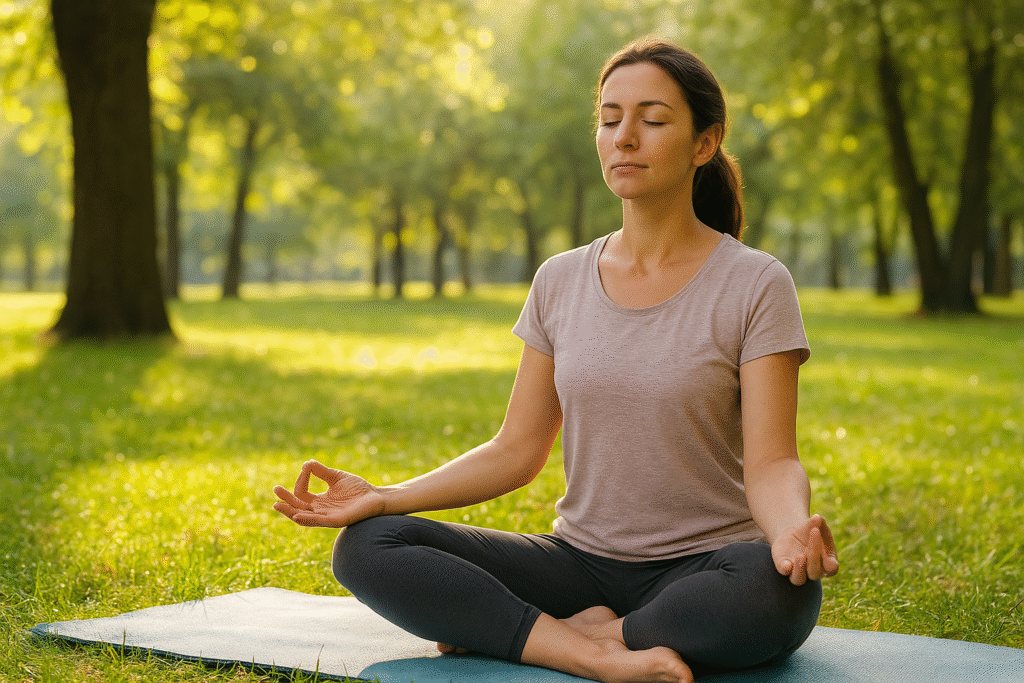
1. Reduces Stress and Anxiety
Yoga lowers cortisol (the stress hormone) and teaches mindfulness, which helps people stay present instead of worrying about the past or future.
2. Improves Mood and Reduces Depression
Studies show that yoga increases serotonin and dopamine levels, both linked to happiness and emotional well-being.
3. Enhances Sleep Quality
Insomnia is common among people with depression and anxiety. Yoga, especially restorative poses and breathing exercises, promotes deep, restful sleep.
4. Boosts Self-Awareness and Emotional Regulation
Yoga encourages introspection and helps individuals recognize negative thought patterns, replacing them with calmness and balance.
5. Strengthens the Mind-Body Connection
Through controlled breathing and movement, yoga creates harmony between physical sensations and emotional states, making it easier to cope with challenges.
Scientific Evidence Backing Yoga for Mental Health
- A 2020 Harvard Medical School study found that yoga significantly reduces symptoms of depression when practiced regularly.
- Johns Hopkins University research shows yoga can be as effective as antidepressants for mild to moderate depression.
- The Anxiety and Depression Association of America (ADAA) recommends yoga as a complementary therapy for managing stress and anxiety.
Best Yoga Poses for Anxiety and Depression
Here are some beginner-friendly yoga poses that US practitioners can easily include in daily practice:
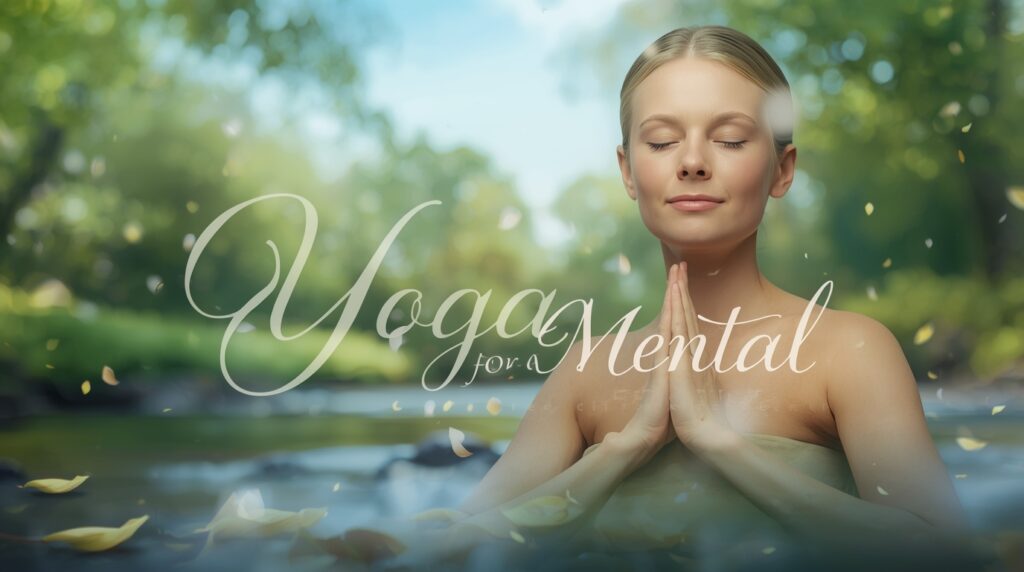
- Child’s Pose (Balasana) – Relieves stress and calms the nervous system.
- Bridge Pose (Setu Bandhasana) – Opens the chest and boosts mood by increasing blood circulation.
- Legs Up the Wall (Viparita Karani) – Promotes relaxation and helps fight insomnia.
- Cat-Cow Pose (Marjaryasana-Bitilasana) – Releases tension in the spine and improves focus.
- Corpse Pose (Savasana) – Deep relaxation, ideal for reducing anxiety and grounding the mind.
- Seated Forward Bend (Paschimottanasana) – Calms the brain and reduces mild depression.
Breathing Techniques (Pranayama) for Mental Clarity
Breathwork is a crucial part of yoga that directly impacts the nervous system.
- Alternate Nostril Breathing (Nadi Shodhana) – Balances both hemispheres of the brain, reduces stress.
- Deep Belly Breathing – Activates the parasympathetic system, lowering anxiety.
- Bhramari (Humming Bee Breath) – Vibrations calm the mind and reduce tension.
Read More: Bikram Yoga Poses: The Complete Guide to All 26 Postures & Their Benefits
Yoga Lifestyle Tips for Americans
- Morning Routine – Just 15 minutes of yoga before work can set a calm tone for the day.
- Office Yoga – Simple stretches during breaks can prevent stress build-up.
- Digital Detox – Replace 30 minutes of scrolling with 30 minutes of yoga or meditation.
- Community Classes – Many US cities offer free or donation-based yoga sessions in parks.
- Yoga Apps – Popular apps like Headspace, Down Dog, and Alo Moves make it easy for beginners.
Success Stories in the US
- Corporate Wellness – Many US companies like Google and Apple have introduced yoga sessions to reduce employee stress.
- Veterans Programs – The US Department of Veterans Affairs includes yoga to help veterans cope with PTSD.
- Schools & Universities – More American schools are adding yoga to classrooms to improve student mental health.
Conclusion
Mental health challenges like anxiety and depression are on the rise in the United States, but yoga offers a natural, effective, and holistic solution. With regular practice, yoga helps calm the mind, regulate emotions, and promote overall well-being. Whether you are a student, a professional, or a senior, yoga can be a powerful tool to restore balance in your life.
If you’re struggling with stress or depression, start with small, consistent steps—just a few minutes of yoga daily. Over time, you’ll notice not just physical flexibility, but also emotional strength and inner peace
FAQ
Q1: Can yoga cure depression completely?
Yoga is not a replacement for medical treatment, but it can significantly reduce symptoms of depression and anxiety when combined with therapy and/or medication.
Q2: How often should I practice yoga for mental health benefits?
Even 15–30 minutes, 4–5 times a week, can show noticeable improvements.
Q3: Is yoga safe for beginners with anxiety?
Yes, yoga is safe. Start with gentle poses and breathing exercises under proper guidance.
Q4: Which type of yoga is best for depression?
Restorative Yoga, Hatha Yoga, and Yin Yoga are especially effective for relaxation and emotional balance.
Q5: Can yoga replace meditation for stress relief?
Yoga includes meditation. While both are beneficial, combining yoga with mindfulness meditation provides the best results.

